Related Research Articles
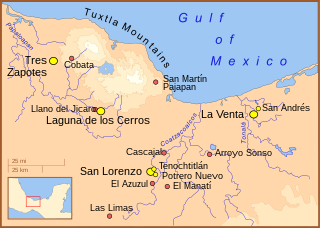
The Olmecs were the earliest known major Mesoamerican civilization. Following a progressive development in Soconusco, they occupied the tropical lowlands of the modern-day Mexican states of Veracruz and Tabasco. It has been speculated that the Olmecs derived in part from the neighboring Mokaya or Mixe–Zoque cultures.
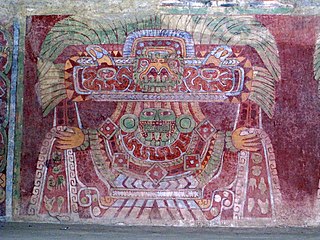
The Great Goddess of Teotihuacan is a proposed goddess of the pre-Columbian Teotihuacan civilization, in what is now Mexico.
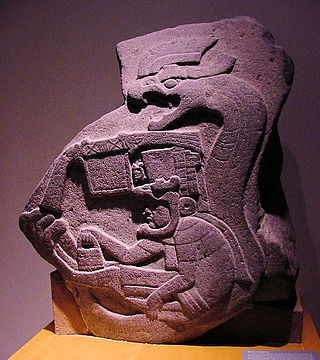
The religion of the Olmec people significantly influenced the social development and mythological world view of Mesoamerica. Scholars have seen echoes of Olmec supernatural in the subsequent religions and mythologies of nearly all later pre-Columbian era cultures.
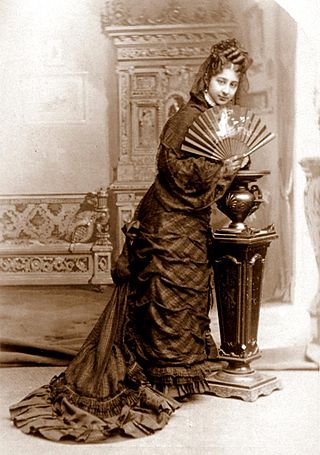
Zelia Maria Magdalena Nuttall was an American archaeologist and anthropologist who specialised in pre-Aztec Mexican cultures and pre-Columbian manuscripts. She discovered two forgotten manuscripts of this type in private collections, one of them being the Codex Zouche-Nuttall. She decoded the Aztec calendar stone and was one of the first to identify and recognise artefacts dating back to the pre-Aztec period.

Ivan Gladstone Van Sertima was a Guyanese-born British associate professor of Africana Studies at Rutgers University in the United States.

Alfonso Caso y Andrade was an archaeologist who made important contributions to pre-Columbian studies in his native Mexico. Caso believed that the systematic study of ancient Mexican civilizations was an important way to understand Mexican cultural roots.

Michael Douglas Coe was an American archaeologist, anthropologist, epigrapher, and author. He is known for his research on pre-Columbian Mesoamerica, particularly the Maya, and was among the foremost Mayanists of the late twentieth century. He specialised in comparative studies of ancient tropical forest civilizations, such as those of Central America and Southeast Asia. He held the chair of Charles J. MacCurdy Professor of Anthropology, Emeritus, Yale University, and was curator emeritus of the Anthropology collection in the Peabody Museum of Natural History, where he had been curator from 1968 to 1994.
Mesoamerica, along with Mesopotamia and China, is one of three known places in the world where writing is thought to have developed independently. Mesoamerican scripts deciphered to date are a combination of logographic and syllabic systems. They are often called hieroglyphs due to the iconic shapes of many of the glyphs, a pattern superficially similar to Egyptian hieroglyphs. Fifteen distinct writing systems have been identified in pre-Columbian Mesoamerica, many from a single inscription. The limits of archaeological dating methods make it difficult to establish which was the earliest and hence the progenitor from which the others developed. The best documented and deciphered Mesoamerican writing system, and the most widely known, is the classic Maya script. Earlier scripts with poorer and varying levels of decipherment include the Olmec hieroglyphs, the Zapotec script, and the Isthmian script, all of which date back to the 1st millennium BC. An extensive Mesoamerican literature has been conserved, partly in indigenous scripts and partly in postconquest transcriptions in the Latin script.
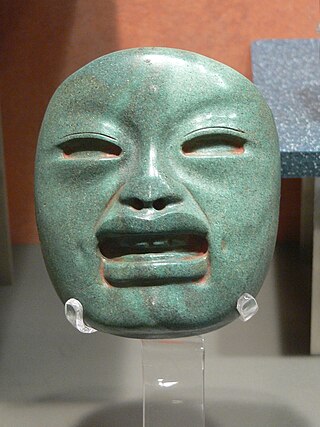
Olmec alternative origin speculations are non-mainstream pseudohistorical theories that have been suggested for the formation of Olmec civilization which contradict generally accepted scholarly consensus. These origin theories typically involve contact with Old World societies. Although these speculations have become somewhat well-known within popular culture, particularly the idea of an African connection to the Olmec, they are not regarded as credible by mainstream researchers of Mesoamerica and are considered fringe theories.

Matthew Williams Stirling was an American ethnologist, archaeologist and later an administrator at several scientific institutions in the field. He is best known for his discoveries relating to the Olmec civilization. Much of his work was done with his "wife and constant collaborator" of 42 years Marion Stirling.

Karl Andreas Taube is an American Mesoamericanist, Mayanist, iconographer and ethnohistorian, known for his publications and research into the pre-Columbian cultures of Mesoamerica and the American Southwest. He is Distinguished Professor of Anthropology at the College of Humanities, Arts, and Social Sciences, University of California, Riverside. In 2008 he was named the College of Humanities, Arts, and Social Sciences distinguished lecturer.

Manuel Gamio (1883–1960) was a Mexican anthropologist, archaeologist, sociologist, and a leader of the indigenismo movement. Although he rejected full sovereignty for indigenous communities in Mexico, he argued that their self-governing organizations, such as tribal governments, municipal organizations, and elected community leaders should be recognized and respected. He is often considered as the father of modern anthropological studies in Mexico. He devised a well-known system for classifying the hunter-gatherers of Central America.

The Feathered Serpent is a prominent supernatural entity or deity, found in many Mesoamerican religions. It is still called Quetzalcoatl among the Aztecs, Kukulkan among the Yucatec Maya, and Q'uq'umatz and Tohil among the K'iche' Maya.
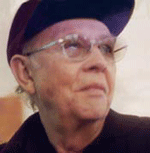
Robert E. Lee Chadwick was an American anthropologist and archeologist, primarily known for his contributions to the Handbook of Middle American Indians.
Pedro Armillas Garcia was Spanish academic anthropologist, archaeologist, and an influential pre-Columbian Mesoamerica scholar of the mid-20th century. As an archaeologist he was known both for his fieldwork and excavations at numerous sites in central and northern Mexico, and his contributions in archaeological theory. His study of how Mesoamerican agriculture and subsistence modes of production influenced the development of Mesoamerican cultures was a pioneering one, and he was one of the earliest to investigate pre-Columbian irrigation and hydraulic systems.
Arthur G. Miller is an American art historian, archaeologist and academic. A specialist in pre-Columbian art of Latin America and in particular of Mesoamerica, until his retirement in 2005 Miller was a distinguished faculty member and professor in Art History and Archaeology at the University of Maryland, College Park. Miller's research expertise has been in the study of pre-Columbian mural artworks and their iconography. He has published numerous academic papers and books on the mural art of Mesoamerican cultures, such as Classic-era Teotihuacan of central Mexico, Zapotec tombs and sites in Oaxaca, and Maya sites along the eastern coastline of the Yucatán Peninsula.
Louise M. Burkhart is an American academic ethnohistorian and anthropologist, noted as a scholar of early colonial Mesoamerican literature. In particular, her published research has a focus on aspects of the religious beliefs and practices of Nahuatl-speakers in central Mexico. Her work examines the historical documentation from the time of the Spanish Conquest and the subsequent era of colonial Mexico, and studies the continuities and transformations of indigenous Nahua communities and culture. Burkhart has written extensively on colonial Nahuatl drama, folklore, poetry and catechistic texts, translating a number of these documents from the original Nahuatl with commentaries and historical interpretations and notes. She has also published research on the aesthetics and iconography of pre-Columbian and Indochristian art, Nahuatl linguistics, and the rise of the Virgin of Guadalupe cult within Mexican Roman Catholicism.

The use of mirrors in Mesoamerican culture was associated with the idea that they served as portals to a realm that could be seen but not interacted with. Mirrors in pre-Columbian Mesoamerica were fashioned from stone and served a number of uses, from the decorative to the divinatory. An ancient tradition among many Mesoamerican cultures was the practice of divination using the surface of a bowl of water as a mirror. At the time of the Spanish conquest this form of divination was still practiced among the Maya, Aztecs and Purépecha. In Mesoamerican art, mirrors are frequently associated with pools of liquid; this liquid was likely to have been water.
William Timothy Sanders (1926–2008) was an American anthropologist who specialized in the archaeology of Mesoamerica.

Anna-Britta Hellbom was a Swedish anthropologist and Americanist. She is known for her ethnographic fieldworks in Mesoamerica in Mexico.
References
- Bryant, Chris (2005). "'Rubber People' - The Americas' First Civilization: Since 1967 Jungle Discovery Anthropologist Has Been at Forefront of Olmec Research". Research Magazine. University of Alabama. Archived from the original on 2012-08-23. Retrieved 2008-09-19.
- Hirst, K. Kris (n.d.). "Contributors: Richard Diehl". Archaeology. About.com . Retrieved 2009-09-19.
- UA Dept. of Anthropology (May 2007). "Dick Diehl Announces His Retirement" (PDF). Anthropology at Alabama Newsletter. 5 (1). Tuscaloosa, AL: 2. Retrieved 2009-09-19.